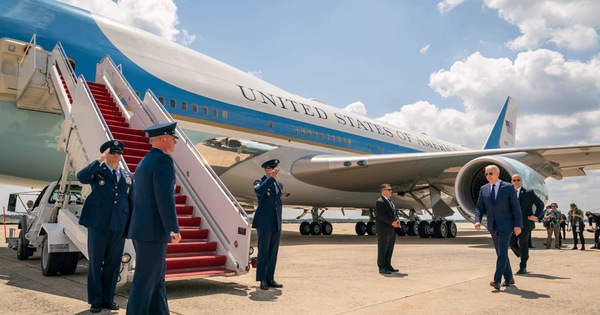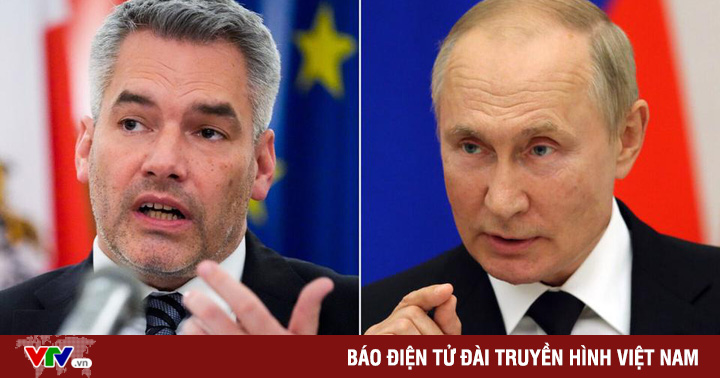Possessing a wide range of modern Western weapons, many Ukrainian soldiers do not know how to operate them, making it difficult for them to exert their advantage on the battlefield.
Since Russia launch a military campaign in UkraineNATO countries have provided Kiev with a large and increasingly modern weaponry, as well as a commitment to deliver more powerful rocket artillery systems.
But training Ukrainian soldiers to use these advanced weapons has become a major and increasingly serious obstacle. This is what Sergeant Dmytro Pysanka and his battery encountered when they were provided with a modern Western auxiliary equipment for an old anti-tank gun in southern Ukraine.

Ukrainian soldiers steered M777 howitzers towards Russian military positions in the Donetsk region last month. Image: Reuters.
Previously, when looking at the old-fashioned scope mounted on the cannon, Pysanka had to read a series of numbers and indicators to calculate the parameters to help him shoot accurately at the target, but mistakes often occurred in the middle of the battlefield. chaotic.
Over a month ago, Pysanka’s forward artillery unit received a much more advanced weapon: a Western-aided laser rangefinder. However, no one knows how to use it.
“It’s like we’ve been given an iPhone 13 but only know how to make calls,” Pysanka said in an exasperated voice.
This device, called JIM LR, is shaped like a binocular equipped with advanced sensors, most likely part of a batch of US aid to Ukraine.
They seem like the perfect complement to the anti-tank guns built since 1985. They can help gunners see their targets at night and give information on distance, direction and coordinates. GPS level of the target.
Some soldiers learned how to operate the JIM LR, but then they were rotated elsewhere, leaving Pysanka’s unit with an expensive paperweight.
“I tried to learn how to use it by using Google Translate on the English manual,” says Pysanka.
Britain on June 6 pledged to send Ukraine multiple M270 multiple rocket launchers to improve the range and accuracy of this country’s artillery, just days after US President Joe Biden pledged to aid those in need. Similar weapons for Kiev.
Ukraine’s most advanced weapons are concentrated in the Donbass region in the east of the country, which is witnessing the heaviest fighting since Russia launched its military campaign. Russian forces are approaching Donbass from three directions north, east and south. At the eastern tip, the two sides fought fiercely at Severodonetsk, turning it almost into a “ghost city”.
Over the weekend, Ukrainian troops regained control of part of the city, but on June 6, they were pushed back when Russian troops increased their artillery shelling, according to Serhiy Gaidai, governor of the Lugansk region controlled by the Ukrainian government. control.
A day after his visit to the front lines in the city of Lysychansk, near Severodonetsk, President Volodymyr Zelensky gave a candid assessment of the challenges facing Ukraine.
“There will be more obstacles. They are getting stronger. But we still have a chance to fight,” he said.
Ukraine’s president regularly calls on the West to quickly aid in modern heavy weapons, putting his hopes on the systems of anti-tank guided missiles, howitzers and satellite-guided rockets that Western allies have. West provided.
But besides the never-ending need for weapons, the Ukrainian military also needs to know how to use them. Without proper training, a dilemma like that of Sergeant Pysanka’s unit will spread to the entire army, analysts say.

A soldier disguises an anti-tank gun of an artillery unit in southern Ukraine. Image: NY Times.
“Ukrainians are very eager to use Western equipment, but they need training to be able to maintain them,” said Michael Kofman, a Russia expert at the CNA research institute based in Arlington, Virginia, USA. review. “There are things you can’t rush.”
The United States and many other NATO members provided intensive training to the Ukrainian military prior to the outbreak of hostilities, although the training program did not involve some of the advanced weapons they were transferring.
From 2015 to the beginning of this year, American experts trained more than 27,000 Ukrainian soldiers at the Yavoriv Combat Training Center, near the city of Lviv, in the west of the country. There were more than 150 US military advisers in Ukraine when Russia launched its military campaign in late February, but they all withdrew.
The US has so far pledged about $54 billion in aid to Ukraine and provided a range of weapons and equipment, most recently a number of HIMARS rocket artillery systems. The move was quickly criticized by the Kremlin.
To avoid a head-to-head confrontation with Russia, the Biden administration has refused to send military advisers back to Ukraine to help train its forces in the use of new weapons systems.
This has put a lot of pressure on soldiers like Sergeant Andriy Mykyta, a member of the Ukrainian border guard. Before the conflict, he received short-term training from NATO advisers in advanced British anti-tank weapons, known as the NLAW.
Now, Mykyta must go to all the frontline positions to teach her teammates how to use them. According to him, in many cases, Ukrainian soldiers have to learn how to use certain weapons, including the NLAW, through online video.
“But there are weapons that you can’t learn to operate intuitively, like anti-aircraft missiles, artillery and some other devices,” said Sergeant Mykyta. “So we need formal courses.”
Ukraine’s need is clearly visible in the area where Sergeant Pysanka’s unit is stationed, just northeast of the now-Russian-controlled city of Kherson. Last week, the Ukrainian army launched a counterattack here, but was stopped after Russian forces destroyed an important bridge. Ukrainian military officials said the lack of long-range artillery support made it difficult for them to cross the river.
As for Sergeant Pysanka’s battery, the only person who knew how to use the JIM LR was a soldier from another unit. This soldier decided to translate 104 pages of instructions in English into Ukrainian.
But they still need trial and error to figure out what the key combinations do, and to find a solution to the lack of tripods and video monitors.
“If you are aiming at a target at a distance and holding the JIM LR in your hand, the device will vibrate and the data will be transmitted incorrectly,” says Pysanka. “It is safer if the device is mounted on a tripod and the operator can work on the screen.”
The JIM LR, made by the French company Safran, looks like a combination of virtual reality glasses and traditional binoculars. They can also be used with a mapping application on a tablet that the Ukrainian military uses to aid in artillery attacks.
Weighing about 2.7 kg, it is much smaller than the 4 and a half ton M777 155 mm howitzer, which was recently supplied to Ukraine by the US and has already made its way to the front lines in the east.
Ukrainian officers said that the M777 howitzer is very mobile and has a long range, but training has become a bottleneck in their deployment.
M777 howitzers use the American measurement system, which means that using a Ukrainian metric wrench when maintaining and repairing them will become very difficult and there is a risk of damage to the equipment.
According to Major Vadim Baranik, deputy commander of a maintenance unit, only after sending the M777 cannon, did the US deliver the toolboxes to support operation and maintenance to Ukraine. But these tools are very easy to lose or destroy, making the artillery useless due to not being properly maintained and fine-tuned.
The JIM LR device provided target information in the NATO format, forcing Sergeant Pysanka to convert to a Soviet-era coordinate system to be used with the operational map of Ukraine. This conversion has a lot of potential for errors.

Military developments in Ukraine after more than 100 days of fighting. Graphics: Washington Post.
Pysanka is now focusing on learning how to use JIM LR. This soldier faced many difficulties, although his unit was only equipped with a few Western anti-tank missiles, without more modern weapons.
“We don’t have the same resources as the east,” said Major Roman Kovalyov, deputy commander of Sergeant Pysanka’s battery unit. “What Ukraine has received, we have only seen on TV. But we believe that sooner or later it will be delivered here.”
Vu Hoang (Follow NY Times)
at Blogtuan.info – Source: vnexpress.net – Read the original article here



